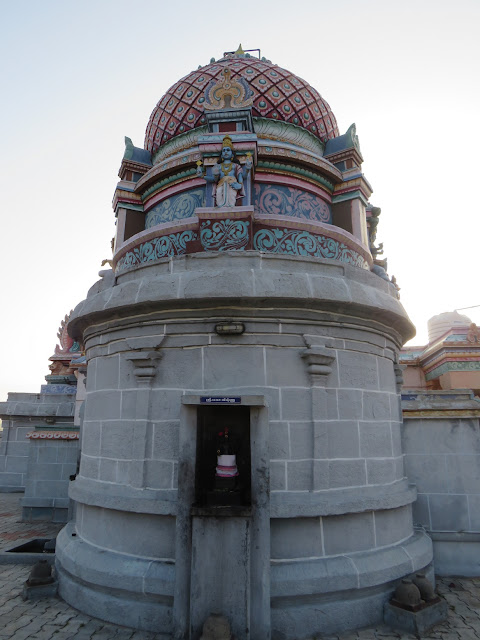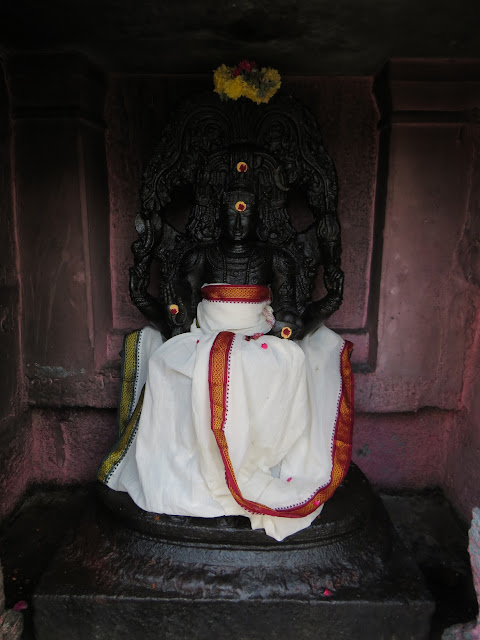Pillaipakkam Vaideeswaran Temple
Pillaipakkam is a place where you could not find the hustle-bustle of city life. With hardly any automobile vehicle, the remote hamlet surrounded by fertile fields, giant trees and village ponds, it is a kind of time travel to the good old bygone era. To enhance the serenity of the place, we have a beautiful Chola-era structure called Vaideeswaran Temple.
Even though the distance is just 5 km from Sriperumbudur, not many of us would have heard about this remote village. Hence, the temple and its history remain unknown. However, it is well maintained with the support of locals. They regularly visit the temple.
History
Two inscriptions of Tirukkachur from Rajaraja Chola III (1216-56 CE) record this village as Kaitavakaitava Nallur alias Pillaipakkam. They also state that the village was part of Maganur nadu, a sub-division of Sengattu kottam in Jayankonda Chola Mandalam.
Besides the inscriptions mentioned above, I could not find the details of any other inscription that talks about the village or temple. However, the temple had inscriptions, which were apparently lost. A broken inscription slab is still found here. Also, the walls behind the niche images of Vishnu and Brahma have some traces of inscriptions. I could also find a few lines of inscriptions in a white washed wall
In 1977 CE, a wealthy person from the village named Singaravelu Chettiar renovated the temple, which was in ruins. A modern-day inscription of the same year claims that the original temple was built during the Pallava period and was renovated by Sundara Chola in the 10th century CE. It further adds that the structure was damaged by Golkonda Nawab and was rebuilt by Chettiar.
Temple Layout
The moderately sized temple has two entrances. The temple tank is found in front of the east entrance. The southside entrance is used as the central doorway.
The main entrance has the shaded verandahs called "thinnai" on both sides, similar to what we find in traditional houses.
The east-facing main shrine has two doorways, in east and south. It consists of Moola sthana (sanctum), Antarala, Ardha mandapa and Maha mandapa. The shrine of Goddess is located within Maha mandapa. A Mukha mandapa is found as an extension on the south entrance. There is one prakara (circumambulatory) around the main shrine.
Vaideeswaran
The east-facing sanctum enshrines the big Chola-era sculpture of Shiva Linga called Vaideeswaran. He is the presiding deity of the temple. An unusual feature is that Linga is placed atop a circular Padma peetha (circular lotus base).
Thaiyal Nayaki
Thaiyal Nayaki is enshrined in the south-facing shrine. The four-armed Goddess is in the standing posture.
Vimana
The base and superstructure of Vimana are built in Gajaprshtha (apsidal) style. It is the typical style of many Chola-era temples found in the Tondai region.
Koshta Devas
Ganesha and Dakshinamurti on the south wall, Vishnu on the west wall and Brahma and Durga on the north wall are the Koshta Devas (niche deities).
Except for Dakshinamurti, all other icons are new. The Chola-era Dakshinamurti holds Agni (flame) in his upper left arm and serpent in his upper right arm. His lower right arm is in Abhaya mudra, and it holds a rosary (aksha mala). He has a palm leaf in his lower left arm.
Other Deities
Ganesha and Kartikeya adorn the entrance of Ardha mandapa. Ganesha's icon belongs to Chola era.
Navagraha and Bhairava are found outside the main shrine.
Chandikeswara is found in a tiny shrine in his usual location near Durga's niche image. His female form, named Chandikeswari, is located outside the sanctum of Thaiyalnayaki, which is unusual.
Nandi and bali peetha are found in the outside corridor, facing Vaideeswara.
Happy travelling.
 |
| Traces of inscriptions |
 |
| Chandkeswari |








.JPG)
Very very good
ReplyDeleteInformation and
Pictures are
Superb.